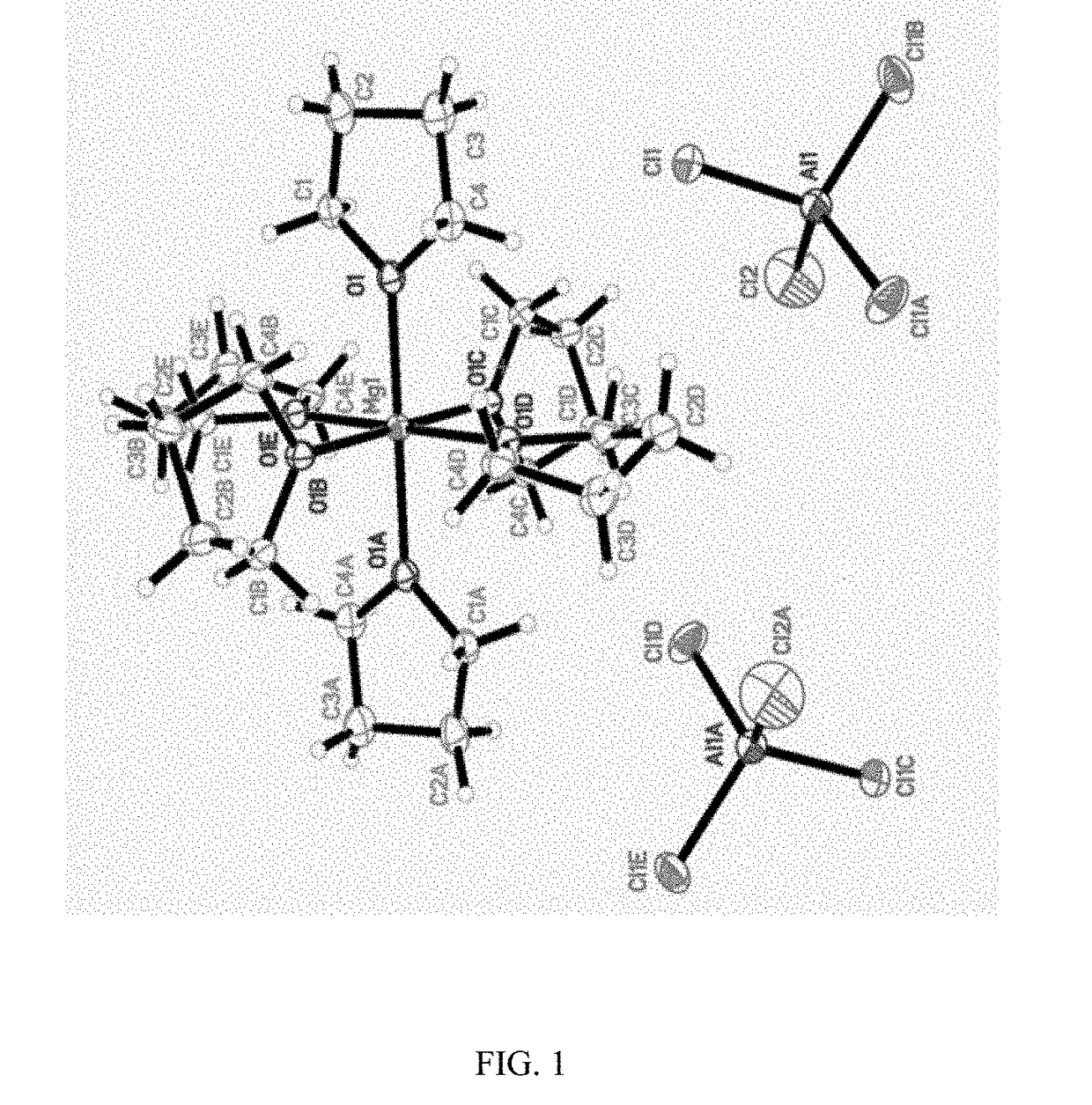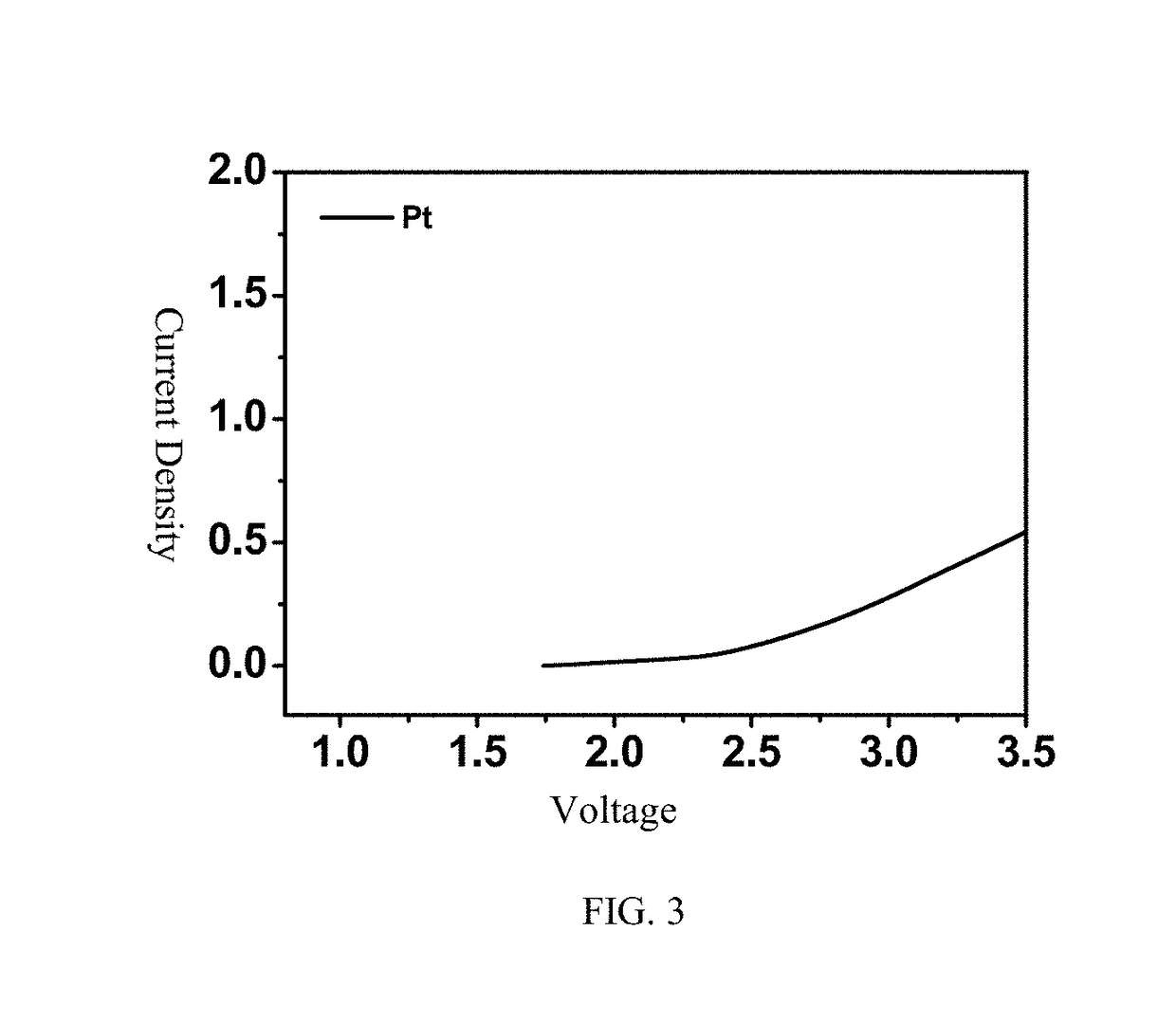Mono-Nuclei Cationized Magnesium Salt, Preparation Method and Applications Thereof
- Summary
- Abstract
- Description
- Claims
- Application Information
AI Technical Summary
Benefits of technology
Problems solved by technology
Method used
Image
Examples
embodiment 1
[0038] 56 mg of anhydrous magnesium chloride (MgCl2) and 158 mg of anhydrous aluminum chloride (AlCl3) react in 1 mL of ionic liquid, namely 1-methyl-(1-butyl) pyrrolidinium bis(trifluoromethanesulfonyl)imide (PYR14TFSI), at a temperature of 95° C. for 24 hours to obtain a light yellow solution; the obtained solution is cooled to room temperature and then added into 1 mL of THF; and 0.3M rechargeable magnesium electrolyte solution is obtained. The crystal structure represents that the electrolyte salt is [Mg(THF)6] [AlCl4]2, and the crystal structure can be seen in FIG. 1. The theoretical values according to the element analysis include C: 36.28, and H: 6.09; and the measured values include C: 36.27%, and N: 6.10%. Raman spectrum test results show that 350 cm−1 is the characteristic peak of the anions AlCl4−, and the Raman peak of other aluminum chloride anions is not seen.
embodiment 2
[0039] 56 mg of anhydrous magnesium chloride (MgCl2) and 158 mg of anhydrous aluminum chloride (AlCl3) react in 1 mL of triethylene glycol dimethyl ether (TEGDME) at a temperature of 30° C. for 24 hours to obtain a light yellow solution; the obtained solution is cooled to room temperature; and then, 0.6M rechargeable magnesium electrolyte solution is obtained. The crystal structure represents that the electrolyte salt is [Mg(TEGDME)2] [AlCl4]2. The theoretical values according to the element analysis include C: 22.87, and H: 4.48; and the measured values include C: 22.89%, and N: 4.47%. Raman spectrum test results show that 350 cm−1 is the characteristic peak of the anions AlCl4−, and the Raman peak of other aluminum chloride anions is not seen.
embodiment 3
[0040] 56 mg of anhydrous magnesium chloride (MgCl2) and 158 mg of anhydrous aluminum chloride (AlCl3) react in 1 mL of toluene at a temperature of 100° C. for 24 hours to obtain a light yellow solution; the obtained solution is cooled to room temperature; and then, 0.6M rechargeable magnesium electrolyte solution is obtained. The crystal structure represents that the electrolyte salt is [Mg(toluene)6] [AlCl4]2. The theoretical values according to the element analysis include C: 55.15, and H: 5.29; and the measured values include C: 55.10%, and H: 5.30%. Raman spectrum test results show that 350 cm−1 is the characteristic peak of the anions AlCl4−, and the Raman peak of other aluminum chloride anions is not seen.
PUM
 Login to View More
Login to View More Abstract
Description
Claims
Application Information
 Login to View More
Login to View More - R&D
- Intellectual Property
- Life Sciences
- Materials
- Tech Scout
- Unparalleled Data Quality
- Higher Quality Content
- 60% Fewer Hallucinations
Browse by: Latest US Patents, China's latest patents, Technical Efficacy Thesaurus, Application Domain, Technology Topic, Popular Technical Reports.
© 2025 PatSnap. All rights reserved.Legal|Privacy policy|Modern Slavery Act Transparency Statement|Sitemap|About US| Contact US: help@patsnap.com



